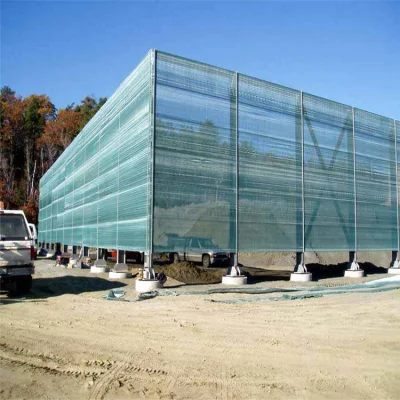The Significance of Sound Barriers for Air Conditioners
In modern households and commercial buildings alike, air conditioning systems play a crucial role in ensuring comfort during hot weather. However, while they provide essential relief from heat, they often come with an unwelcome side effect noise. The sounds generated by air conditioning units can be disruptive, potentially affecting the peace of a neighborhood or the tranquility of a home. This is where sound barriers, or sound fences, come into play, serving as effective solutions to minimize noise pollution.
Understanding the Problem
Air conditioners typically produce noise from multiple sources, including the compressor, fan, and vibration of components. This noise can vary in intensity, from a gentle hum to a more irritating grind. For residential areas, especially in densely populated urban settings, the sounds of air conditioners can create a cacophony that disrupts everyday life. Studies have shown that prolonged exposure to environmental noise can lead to stress, sleep disturbances, and decreased quality of life. Thus, managing the sound produced by these essential appliances has become increasingly important.
The Role of Sound Barriers
Sound barriers are structures designed to absorb, deflect, or reflect sound waves, thereby reducing noise levels for nearby spaces. In the context of air conditioners, these barriers can be installed around the units to create a physical barrier between the source of the noise and the areas that require quiet. These fences can be made from various materials, including wood, vinyl, or specialized sound-absorbing composites, and can be designed to blend with the aesthetics of a property while providing effective sound reduction.
How Sound Barriers Work
The effectiveness of a sound fence depends on several factors, including its height, density, and placement. Generally, taller barriers are more effective at blocking low-frequency sounds, which are harder to absorb. The material used in the barrier also plays a significant role; denser materials tend to provide better sound insulation. For optimal results, sound barriers should be placed as close to the sound source as possible and should extend upward to create a sufficient separation between the noise and the listening areas.
air conditioner sound fence

Benefits of Installing Sound Barriers
1. Enhanced Comfort By reducing the noise produced by air conditioning units, sound barriers contribute to a more peaceful living and working environment. Individuals can enjoy outdoor spaces without the interruption of mechanical sounds.
2. Improved Property Value Homes and commercial properties that are quieter and more pleasant tend to attract more buyers or tenants. Investing in sound barriers can thus enhance property value and marketability.
3. Noise Regulation Compliance Many cities have noise regulations in place. Installing sound fences can help homeowners and businesses comply with local noise ordinances, avoiding potential fines or disputes with neighbors.
4. Aesthetic Appeal Modern sound barriers can be designed to complement the landscape or architecture, making them not only functional but also visually appealing. They can even be integrated with landscaping elements, such as plants or shrubs, to further enhance the overall aesthetics.
Conclusion
As we increasingly rely on air conditioning systems to maintain comfort in our environments, addressing the issue of noise pollution becomes vital. Sound barriers provide a practical and effective solution to mitigate the unwanted noise produced by these units. By investing in sound fences, homeowners and commercial establishments can enjoy a quieter atmosphere, all while enhancing their properties' value and compliance with noise regulations. Ultimately, the importance of a sound barrier for air conditioners is not just about minimizing noise—it's about improving the quality of life in our communities.
-
Steel Walkway Grating Prices Explained: Essential Insights for Industry and Infrastructure
NewsNov.24,2025
-
Comprehensive Guide to Steel Grating Price and Its Global Impact
NewsNov.24,2025
-
Understanding Heavy Duty Steel Grating Price: Global Insights & Industry Trends
NewsNov.23,2025
-
Essential Guide to Wire Mesh Grating: Uses, Benefits & Innovations
NewsNov.23,2025
-
Welded Steel Bar Grating: Durable Solutions for Industrial Walkways & Infrastructure
NewsNov.22,2025
-
Wedge Wire Drain Solutions: Durable, Efficient Water Filtration and Drainage
NewsNov.22,2025
Subscribe now!
Stay up to date with the latest on Fry Steeland industry news.

